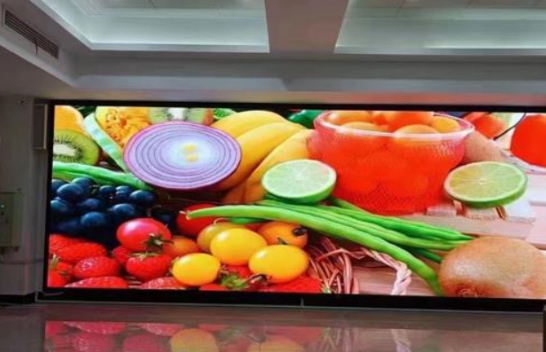
The narrow pixel pitch of small-pitch LED displays has significantly increased screen resolution, expanding their functionalities and applications. However, this also imposes stricter requirements on LED video processors.
As the name suggests, small-pitch LEDs are characterized by smaller pixel spacing, resulting in higher pixel density per unit area. This allows for the display of high-definition graphics, images, and videos, accommodating multiple video and image feeds. Particularly in seamless image splicing, they enable extensive and seamless large-scale configurations. Yet, achieving the desired display quality with small-pitch LED screens heavily relies on the assistance provided by video processors. Unlike outdoor LED displays, small-pitch LEDs face numerous constraints in image representation.
Firstly, varying ambient brightness levels between indoor and outdoor settings necessitate lower screen brightness indoors. Hence, video processors require superior image enhancement capabilities, especially advanced image scaling algorithms. This ensures that high-definition video images maintain maximum detail clarity and grayscale levels after scaling. Moreover, rich image adjustment options for brightness, contrast, and low grayscale processing ensure screens deliver soft, clear, and well-defined images in indoor lighting environments.
Secondly, indoor displays are constrained by limited space, requiring high-definition video and image display within confined areas. This necessitates video processors with higher resolution image output capabilities, increased resolution, and multiple video image inputs.
Thirdly, traditional indoor large-screen applications cater to monitoring, command, and control scenarios, demanding high screen clarity, multiple input signals, and flexible management of real-time video window panels, with swift and efficient control.
From the above, constructing high-resolution display screens with small-pitch LEDs demands not only high-resolution video output from LED video processing devices but also high-resolution video inputs. LED screens display video and images pixel by pixel, where a direct correspondence between input pixels and LED screen pixels results in the clearest display. Currently, the industry primarily uses two methods - video servers and network players - to output ultra-high-definition video images. Multi-screen video servers output video images at a resolution of 1920x1080@60HZ per route, with a single card capable of multiple outputs, up to 8 routes. Unfortunately, due to processing speed limitations, achieving real-time synchronization for these 8-route video images is challenging. LED screens have no physical seams, and when displaying multiple unsynchronized video images, tearing and misalignment occur at the junctions, a technical challenge that the industry continually strives to improve and develop."
"In typical display applications, the proportion of project costs for standard LED video processing equipment is relatively low compared to small-pitch LED displays. Currently, small-pitch LED displays possess their own advantages and characteristics compared to traditional indoor DLP or LCD splicing. However, there remains a significant cost gap in budgeting. To ensure greater development for small-pitch LED displays in the future, controlling costs across the industry chain is essential.
Aside from controlling screen costs, process control during signal processing is also a crucial means of cost management. For complex multi-screen displays and ultra-high-resolution video applications, achieving the desired display effects and maintaining picture quality often requires multiple specialized LED video processing devices. However, as the number of devices increases, so does the cost, while the stability of the system may decrease. Currently, signal processing manufacturers are increasingly inclined towards highly integrated technical solutions, integrating various advanced technologies such as high-speed, high-bandwidth video matrices, seamless switching for high-definition multi-screen displays, and point-to-point splicing synchronization within a single machine. This integration not only balances cost and quality but also significantly enhances the cost-effectiveness of video processing systems. With an increasing number of applications, this product model is becoming more widely adopted."
In the ever-evolving LED industry landscape, Amoonsky stands tall as a pioneering force, continually shaping the course of technological advancement. With product lines like the MVP300 series, SC358, SC359, AX900, VS200, and MS4K, we have consistently redefined standards and reimagined possibilities. Our commitment to innovation and relentless pursuit of excellence underscore our position as a key influencer within the LED industry. As we stride forward, our vision extends beyond merely adapting to changes; it's about leading the change. We envision a future where our solutions not only meet but exceed industry needs. Challenges may emerge, but with unwavering confidence and a rich legacy of innovative solutions, Amoonsky remains undeterred. Our journey ahead is marked by resilience, adaptability, and a steadfast commitment to pushing boundaries, ensuring that we continue to set new benchmarks and illuminate the path forward in the LED industry.
